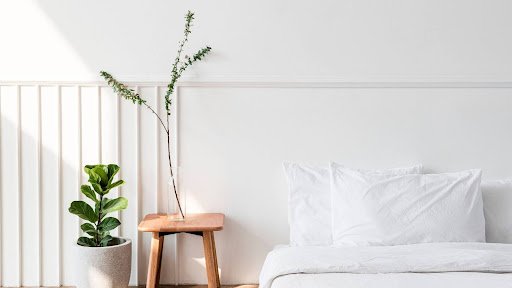The quest for the ideal small-space home decor is not a matter of appearance but an ideology of intentionality, calmness, and purpose. Minimalism is not about nothing, but it is about a deliberate presence where every element has to earn its spot. The aim is to achieve a space that will appear calm but purposeful by limiting visual overload for the sake of mental clarity.
This equilibrium appreciates design acutely, where quality simply overpowers quantity. It is the selection of pieces that are not only breathtaking but also with a clear function or bring pure joy. To those who want to master it, the thoughtful selection of showpieces is paramount. Having the right things, like products from specialty stores for home decor accessories UK, gives the elements needed that turn a bare room into a harmonious and well-thought-out refuge.
The Principle of Intentionality and Purpose
All objects in a minimalist home need to have a deliberate purpose for being there. This is the intentionality principle and the foundation for appearance. Get in the habit of asking before introducing any object into a room if it is useful, if it is beautiful, or if it gives rise to immense joy.
Ornaments are not excluded, but must be chosen with extreme care—a single, intense sculpture on a shelf will have more effect than a crowded collection. This hard editing maintains the space tidy and focused. It shifts the furniture from being all about taking up space to one about creating an environment that speaks of a life of thoughtfulness, where every piece leads cumulatively to an overall state of calm and harmony.
Functional and Multi-Purpose Furniture
The furniture in a minimalist house also has to be functional to the same extent as it’s clean-appearing. Items that have clear lines and no fussy details are best. Also, adding multi-purpose items is an intelligent means of maximising space and less clutter. An ottoman for storage can function as seating, a coffee table, and storage. A chic sofa bed is a must for an office/guest room suite.
A dining table with built-in drawers stores tableware within easy grasp. This focus on multifunctionality makes each piece of furniture fulfil its role, doing its job in a streamlined lifestyle without sacrificing functionality or style.
The Strategic Use of Texture
With a limited colour scheme, texture is the most significant device to achieve visual interest and warmth in a minimalist space. Without textural contrast, an otherwise neutral room is in danger of being cold and sterile. The hope is to create a tactile experience by placing different materials side by side.
Consider the jarringly rough texture of a woven jute area rug up against highly polished concrete floors; the drapey softness of linen drapes next to a flat-finished wooden console table; or the cool sheen of metallic light fixtures up against the warm, wool-blend throw. This multi-layered design for texture adds depth and richness, making the space comfortable and lived-in without ever being messy or disorganised.
Careful Lighting as a Design Element
Lighting in a minimalist home has to be thoughtful and layered. Proper natural light is required, supported by soft window treatments. Artificial light is utilised to pull out the mood and accentuate areas of interest. Rather than one big central light, a group of hidden recessed spotlights, a flashy reading floor lamp, and subtle LED tape under cabinets can create a more dynamic, functional space.
The lamps themselves have to be creations of clean, sculptural beauty; geometric forms in matte black or brushed brass come to mind. Lighting as furniture contributes to the mood and atmosphere of a space without mess.
Curated Personalisation of Significant Objects
Another myth is that minimal homes are not personal. The truth is that personality is conveyed through a highly curated collection of significant objects. The key is to show a few important things and not dozens of them.
Maybe it is a family photograph gallery wall of black-and-white photographs in the same frames, one bookshelf of beloved books, or a painting bought on travels. They all have a story to tell and give character to the room. By keeping the amount small, each item is given the room it deserves, avoiding the feel of sterility and making the space personal to the occupants’ uniqueness.
Conclusion
Ideal minimal decoration is achieved by a bare, intentional design that prefers substance to superfluity. It is a symphony of intentionality, quality, and purpose, where a limited palette of colour, intentional texturing, and deliberate lighting produce a foundation of peace.
Through the employment of negative space and the selection of multi-purpose, high-quality furnishings, the house is turned into a refuge of serenity and order. And finally, minimalism only works when it evolves from being a fashion to a lifestyle, a deliberate choice to be surrounded by only necessities and beauty, and to be left with a space that is both beautiful and incredibly revitalising.
